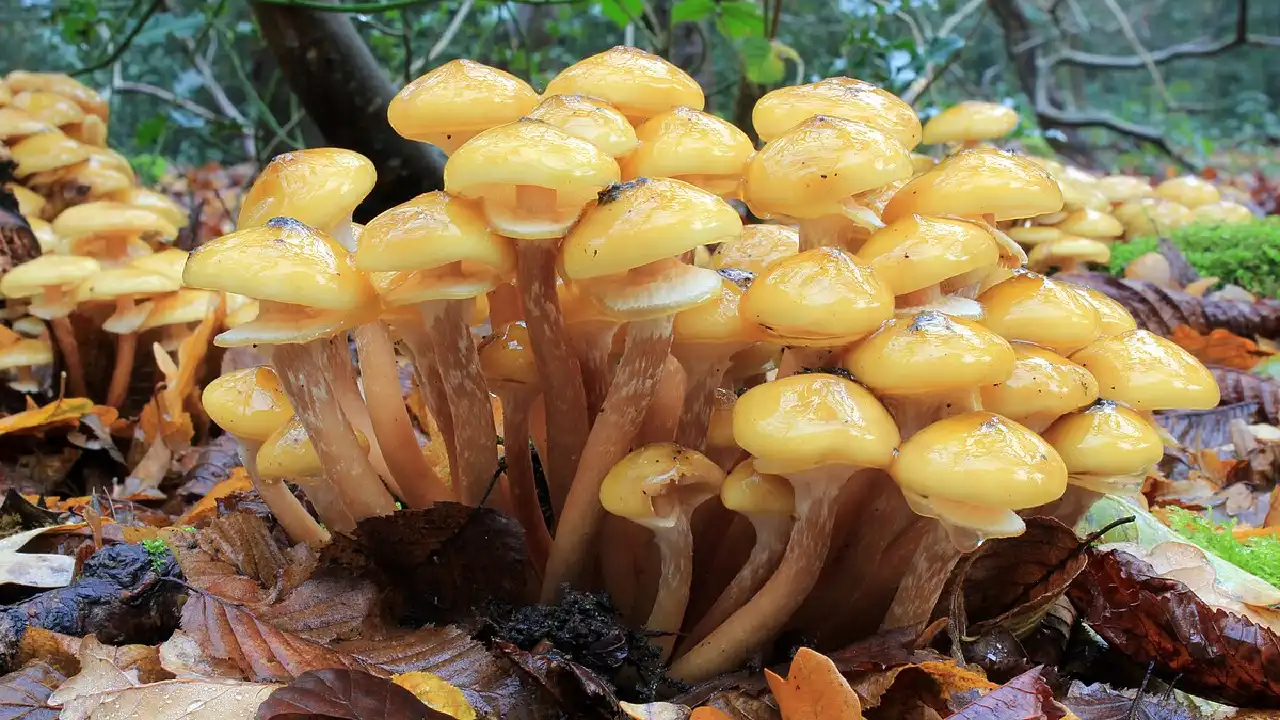If your once-thriving garden is losing its vitality, the cause could be hidden beneath the surface. Honey fungus, one of the most damaging tree diseases in the UK, often creeps in unnoticed until it’s too late. This silent intruder can spread underground, leaving weakened trees and plants in its wake. But by recognising the signs early, you can protect your cherished garden. Here’s everything you need to know about honey fungus, from identification to treatment.
What is Honey Fungus?
Honey fungus refers to a group of fungi within the Armillaria genus that attack and feed on the roots of live trees, shrubs, and other plants. Famously destructive, these fungi spread swiftly underground, causing extensive damage. Gardens across the UK, including areas like Brighton, are particularly vulnerable due to the damp climate that encourages its growth.
How to Identify Honey Fungus
Spotting honey fungus early can mean the difference between saving a few plants and losing a significant part of your garden. Here are the key warning signs:
Honey-Coloured Mushrooms
During autumn, clusters of golden-brown mushrooms often appear around the base of affected plants or trees. These mushrooms are the fruiting bodies of honey fungus and generally grow in loose clumps.
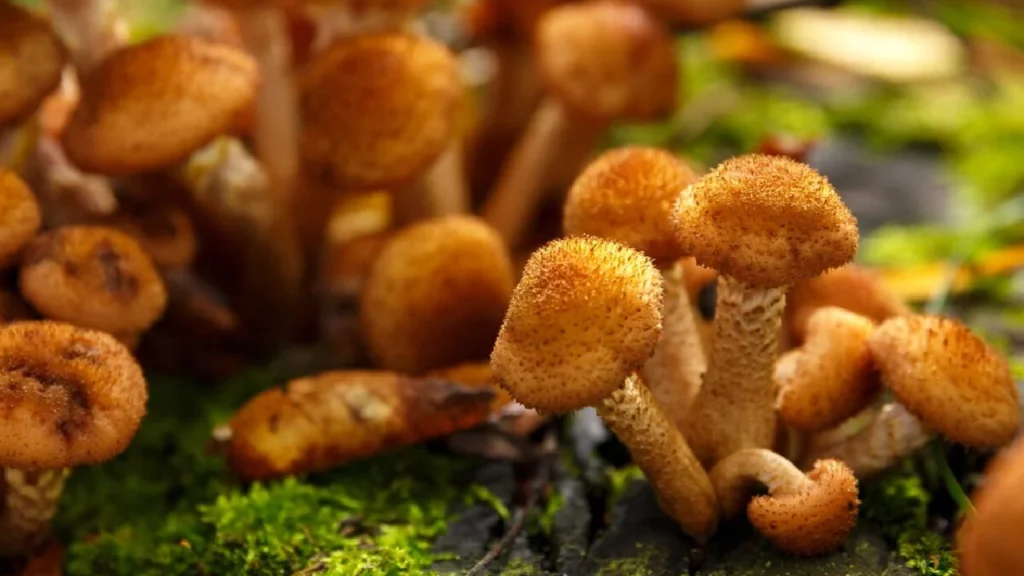
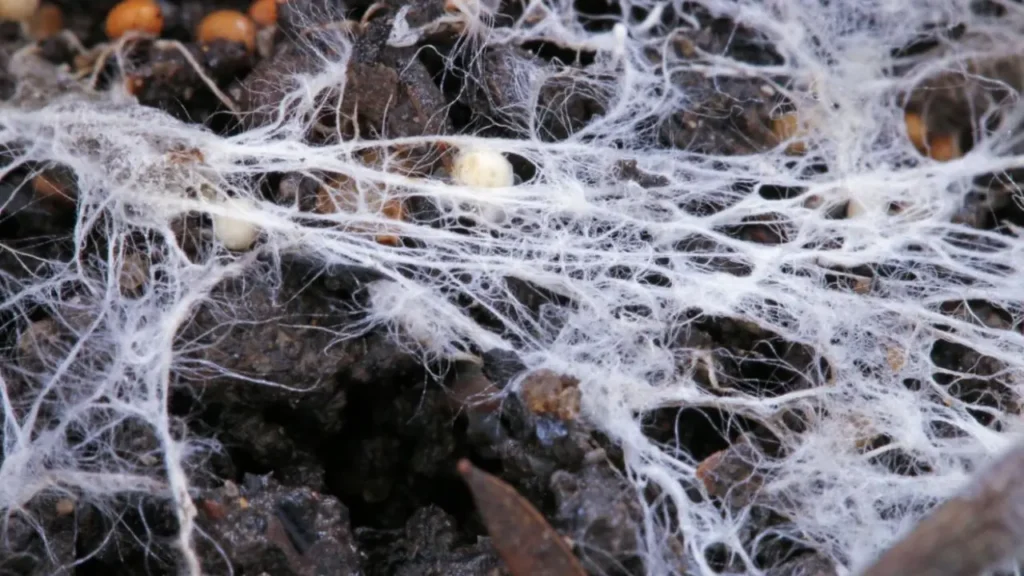
White Mycelium
If you scrape the bark near the base of an infected tree or stump, you may find a thin, white, papery layer beneath the surface. This mycelium emits a strong mushroom-like smell and is a clear indicator of an infestation.
Rhizomorphs (Bootlaces)
Honey fungus produces underground structures called rhizomorphs, which look like black shoelaces. These allow the fungus to spread through the soil, reaching and infecting nearby plants.
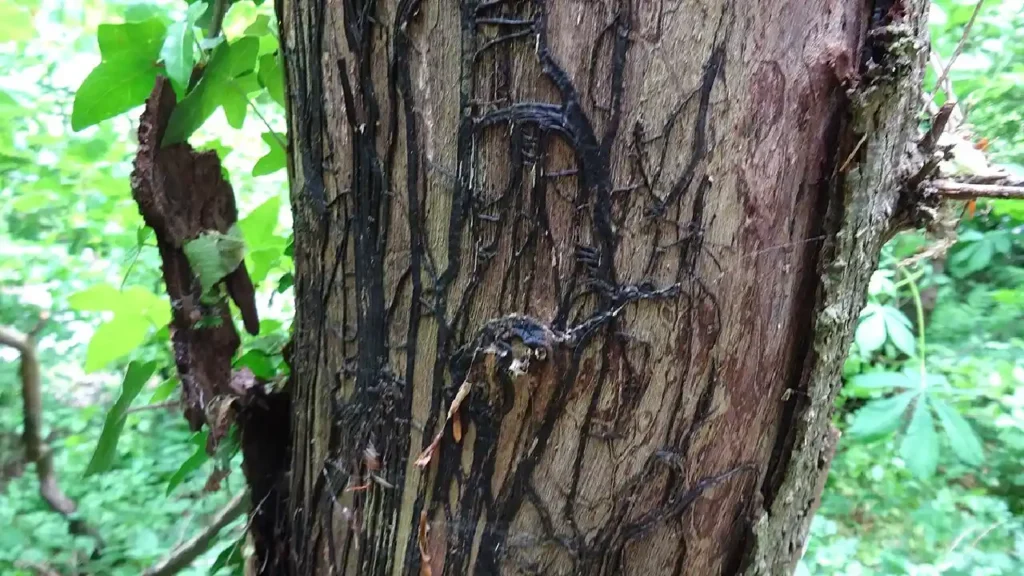
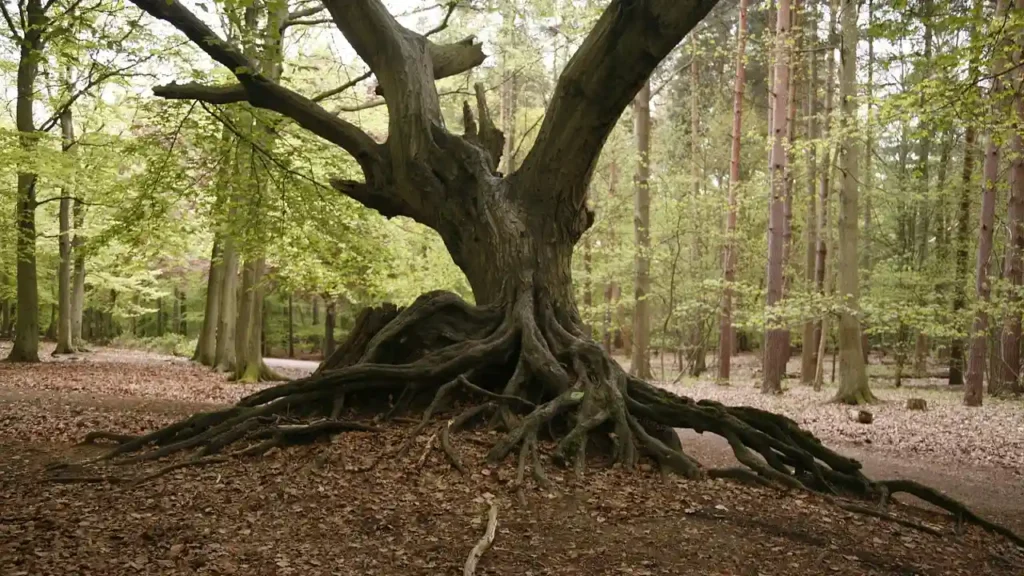
Sudden Plant Death
Plants affected by honey fungus often show symptoms such as wilting or discoloured leaves before dying suddenly. The fungus disrupts the flow of nutrients, causing plants to deteriorate quickly.
Decayed Roots
Upon closer inspection, the roots of infected trees may appear rotten or soft. Honey fungus essentially severs the root system, leading to the tree’s rapid decline.
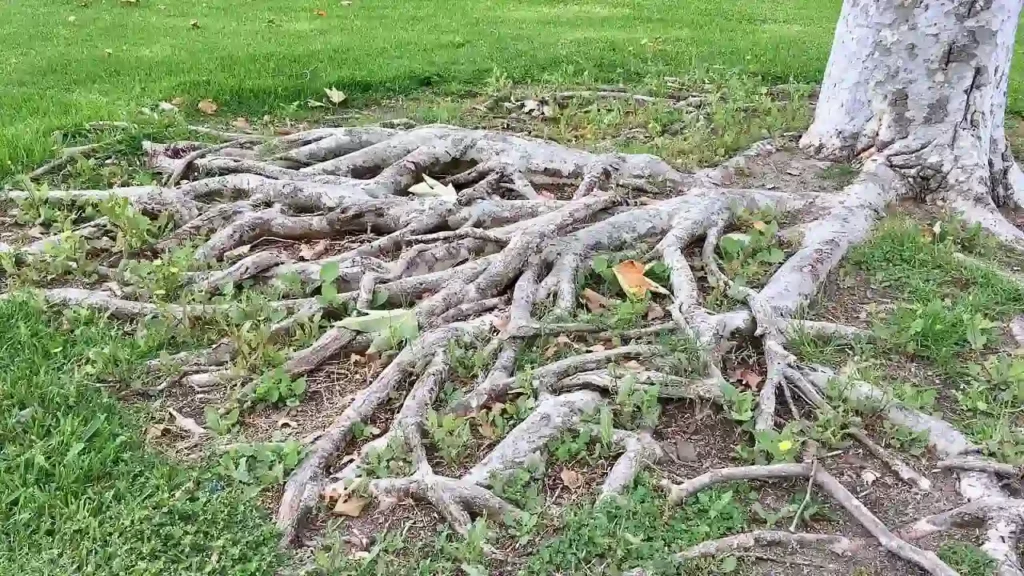
Why Is Honey Fungus Dangerous?
Honey fungus is far more than just a localised problem. This relentless pathogen can spread unseen for years, travelling from plant to plant through its underground rhizomorphs. A single infection can escalate rapidly, affecting multiple trees and shrubs in the garden and leaving little chance of recovery.
Its persistence is another reason it’s so problematic. Even after removing infected plants, the fungus can remain active, especially in gardens like those in Brighton, where plants are often closely spaced.
Treating and Managing Honey Fungus
Although honey fungus is notoriously difficult to eliminate entirely, early intervention can help limit its spread. Here are practical strategies for tackling an outbreak:
1. Remove Affected Plants
Removing infected plants promptly is essential. Extract as much of the root system as possible, as the fungus thrives in leftover roots. Engaging professional tree removal services in Brighton, such as Brighton Tree Surgeon, can ensure thorough and safe removal.
2. Improve Soil Drainage
Honey fungus thrives in damp, poorly drained soil. You can improve your garden’s drainage by incorporating organic matter and ensuring you avoid overwatering.
3. Install Physical Barriers
When replanting, consider installing root barriers. These barriers can protect healthy areas of your garden from the fungus’s spread.
4. Opt for Resistant Plants
Some plants, including oak, cedar, and eucalyptus, are naturally more resistant to honey fungus. Choosing these species when replanting can reduce the risk of reinfection.
5. Stump Grinding
Tree stumps left behind create an ideal environment for honey fungus to grow. Professional stump grinding services, like those offered by Brighton Tree Surgeon, can eliminate this breeding ground entirely.
6. Call in the Professionals
Managing honey fungus effectively often requires expertise. Local professionals, such as Brighton Tree Surgeon, have the training and equipment to assess your garden, remove infected plants, and prevent further spread.
Real-Life Stories of Honey Fungus in Brighton
At Brighton Tree Surgeon, we often assist local garden owners affected by honey fungus. For example, one Brighton homeowner contacted us after noticing their pear tree wilting without reason. On inspection, our team identified an advanced case of honey fungus. We removed the infected tree, carried out stump grinding, and introduced soil management measures to prevent the fungus from spreading. Today, their garden is healthy and flourishing again.
How Brighton Tree Surgeon Can Help You
Addressing honey fungus is not a task to undertake on your own. At Brighton Tree Surgeon, we specialise in tree care and removal, stump grinding, and disease management to keep Brighton’s gardens vibrant and healthy.
Our Services Include:
- Tree Removal for dead or infected trees that risk spreading honey fungus.
- Stump Grinding to remove decayed stumps that could harbour the fungus.
- Preventative Tree Care to improve your garden’s overall resilience to diseases.
Request a Free Consultation
Contact us today and safeguard your garden against honey fungus with help from Brighton Tree Surgeon. Call 01273 947354 or visit our website to book a free assessment.
Frequently Asked Questions
1. How can I tell if my trees are affected by honey fungus?
Check for honey-coloured mushrooms, black rhizomorphs, decayed roots, and the sudden death of plants. Early signs such as wilting or discoloured foliage might also appear.
2. Is honey fungus treatable?
While honey fungus cannot be eradicated entirely, measures like removing infected plants, improving soil drainage, and consulting professionals can limit its spread.
3. Can stump grinding prevent honey fungus?
Yes. Stump grinding eliminates decaying material where honey fungus thrives, reducing the likelihood of reinfection.
4. Are there plants resistant to honey fungus?
Yes. Resistant species include oak, cedar, and eucalyptus. These are excellent choices for replanting affected areas.
5. Why should I hire professionals to manage honey fungus?
Professionals can thoroughly assess the infection, remove affected plants safely, and implement preventative measures to protect the rest of your garden.
Don’t wait for honey fungus to overrun your garden. Brighton Tree Surgeon is here to help identify the problem, tackle it head-on, and restore your garden’s health. Call 01273 947354 for expert assistance today.

